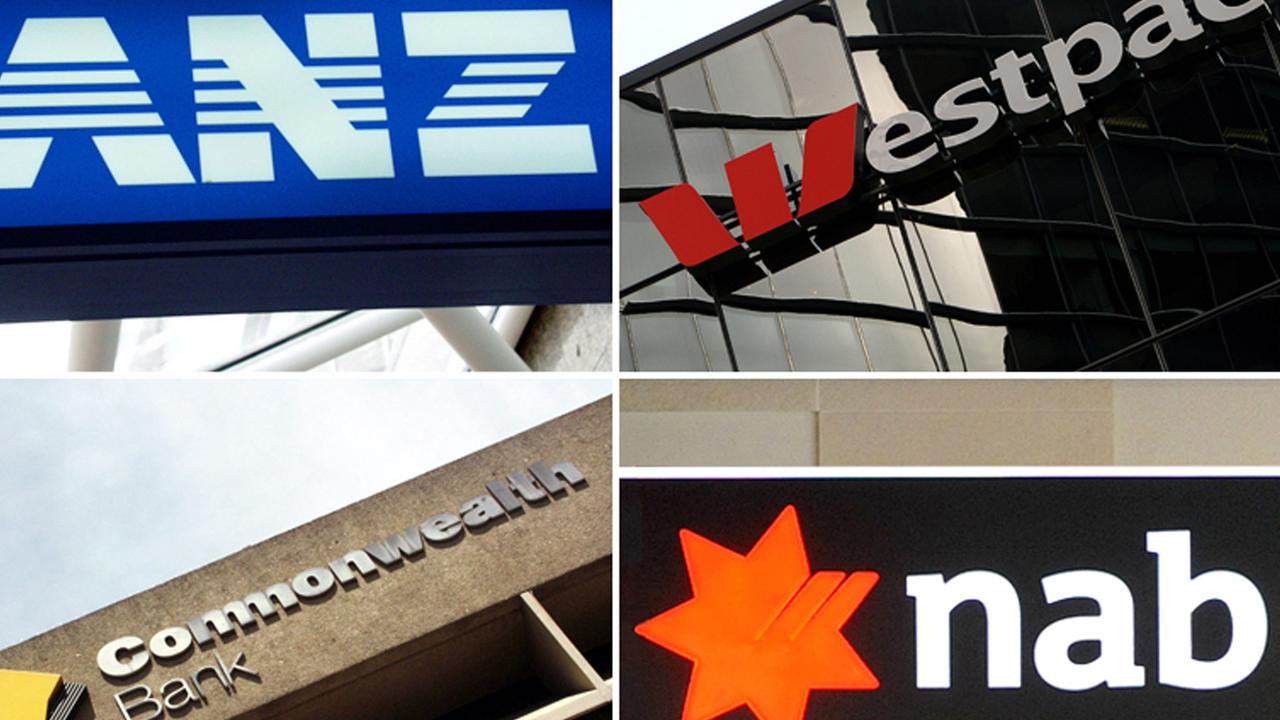Rates, bad debts key to upcoming bank earnings season with Bank of Queensland first up
The heavyweight banking sector faces a mixed month of results as industry watchers warn higher interest rates and bad debts risk pinching earnings.

Business
Don't miss out on the headlines from Business. Followed categories will be added to My News.
Bank of Queensland is expected to set the tone for some of the challenges facing the banks, as it reports on Wednesday ahead of a number of rivals, as market watchers warn of choppy waters and lukewarm investor sentiment on the sector.
In a note, the investment bank Macquarie lifted its expectations of earnings across the banking landscape on the back of improving bond yields and expectations loan losses would prove milder than initial fears.
Macquarie analysts said earnings would likely land almost 2 per cent higher than initial expectations, but target prices for the banks would come in 1 to 2 per cent lower.
They said banks faced ongoing challenges from margin compression on both mortgages and deposits, as well expenses headwinds from higher costs “for which we believe the market has not fully accounted”.
Macquarie said banks would face a 3-10 per cent pre-provision earnings decline due to margins and cost pressures.
Industry watchers have warned banks faced the jaws of higher loan costs coupled with a need for capital, as pandemic funding streams dry up.
This has led banks to report a compression in their net interest margins, reversing of a phenomenon that saw lenders report an expansion in profits through the earlier months of 2022 and 2023 as rates lifted.
Macquarie also tipped a normalisation of bad debts, from low levels posted during the Covid-19 pandemic period, as likely to slash earnings by as much as 8 per cent.
“As we expect credit charges to return closer to long-term levels, we forecast (around) 1-8 per cent impact to bank earnings in FY24E, reducing to ~2-3 per cent in FY25E across all the major banks,” Macquarie analysts said.
“While normalisation may diverge from this trajectory, we note that it will have a relatively small impact on our fundamental valuation, albeit it may affect short-term share price performance.”
However, Macquarie said banks would benefit from an 8-11 basis points earnings tailwind from higher bond rates across the 2024 financial year.

The analysts said higher bond yields would provide some margin relief from competition and deposit switching, which had been expected to weigh on bank profits.
But Macquarie said the bank sector would underperform the market, placing National Australia Bank as the best bank to watch in the current earnings cycle.
Macquarie said BoQ would underperform, noting the key to the bank’s earnings potential was its ability to manage deposit pricing and mix shift towards higher rate savings accounts.
BoQ is due to report its earnings on Wednesday.
In a note to investors, Citi analyst Brendan Sproules said BoQ was facing a spillover of leadership turmoil at the top to its banking business.
Mr Sproules said it was likely BoQ would reveal an increase in operational expenses and lending attrition as the Queensland-lender lost market share.
Citi warned BoQ was likely to miss its core earnings target by 7 per cent and cash earnings by as much as 9 per cent.
Atlas Funds Management chief investment officer Hugh Dive said while BoQ may set the tone for the banking sector when it reports, the larger banks NAB and Westpac, who report their full year results in early November, and CBA which reports quarterly earnings, are likely to be better placed.
“BoQ is a bit weaker,” he said.
But Mr Dive said the banking sector was much better placed to weather a downturn than it was a decade ago.
“The banks are better capitalised and the fixed rate cliff isn’t as bad as feared,” he said.
“The underlying quality of the books is a lot higher, they’ve got rid of the foreign adventures, all the spicy loans are on the credit fund books.”
In a recent note, investment house Barrenjoey upgraded its outlook on Westpac, bumping up the bank to neutral from underweight.
Barrenjoey analyst Jonathan Mott said Westpac now faced “time for a turn around”, tipping the bank would likely announce a major technological transformation and buyback.
Mr Mott said Westpac had long considered the cost of upgrading and consolidating its systems as “uneconomic” since its acquisition of St George Bank in 2008.
But he said the recent action by the corporate regulator to take aim at Westpac over its relief handling would prompt the bank to address the long term underinvestment.
Mr Mott said he expected Westpac was likely to announce a $1.1bn investment in its core banking system at its November results.
However, Mr Mott also flagged expectations a $2bn buyback would also be announced at the results.
More Coverage
Originally published as Rates, bad debts key to upcoming bank earnings season with Bank of Queensland first up









